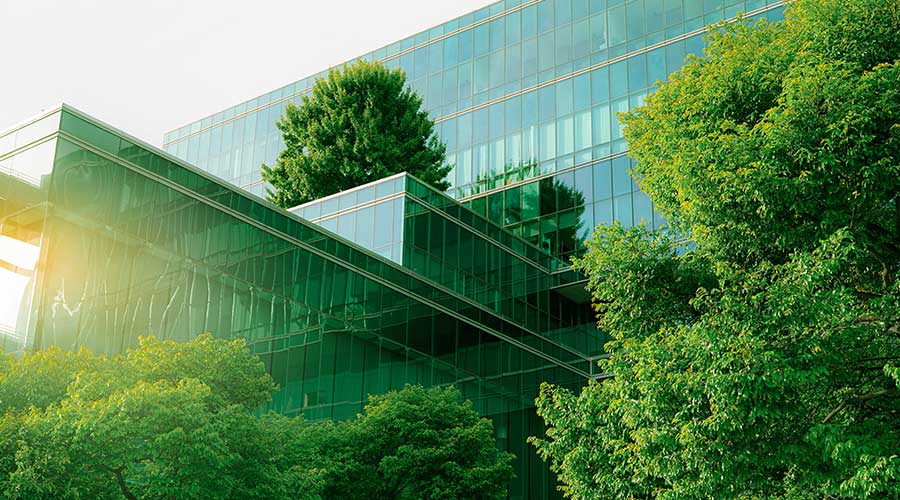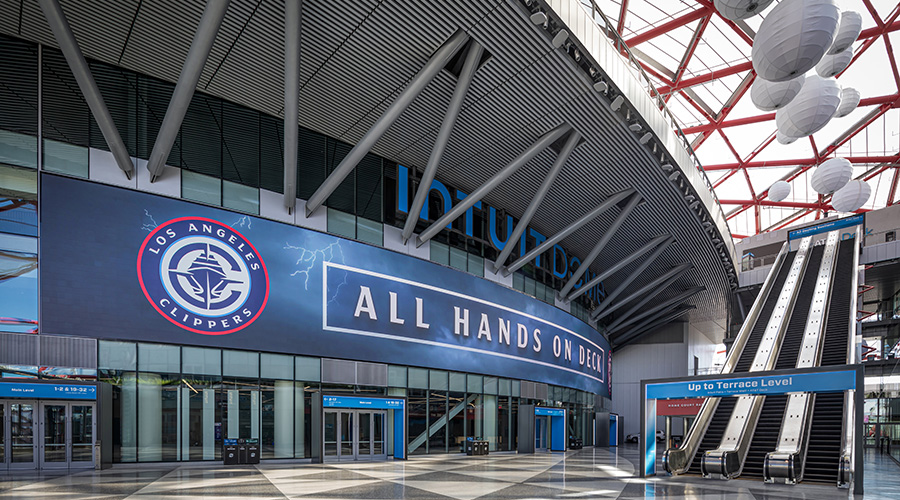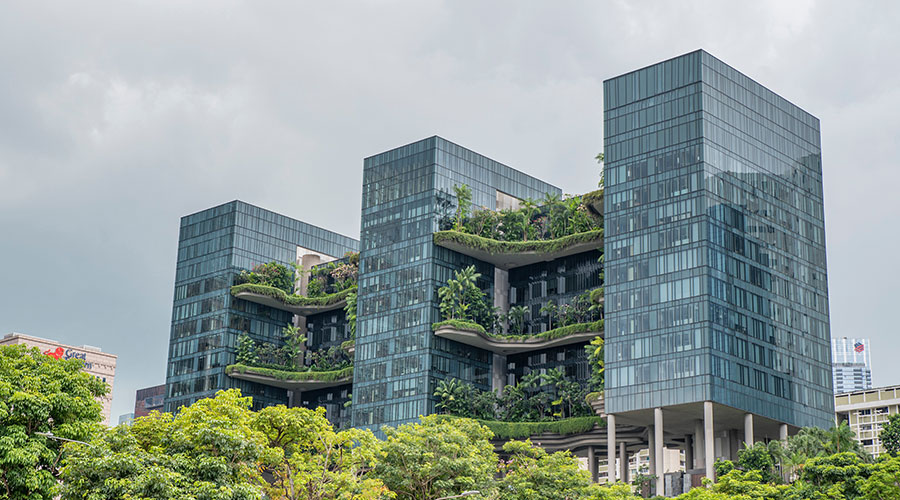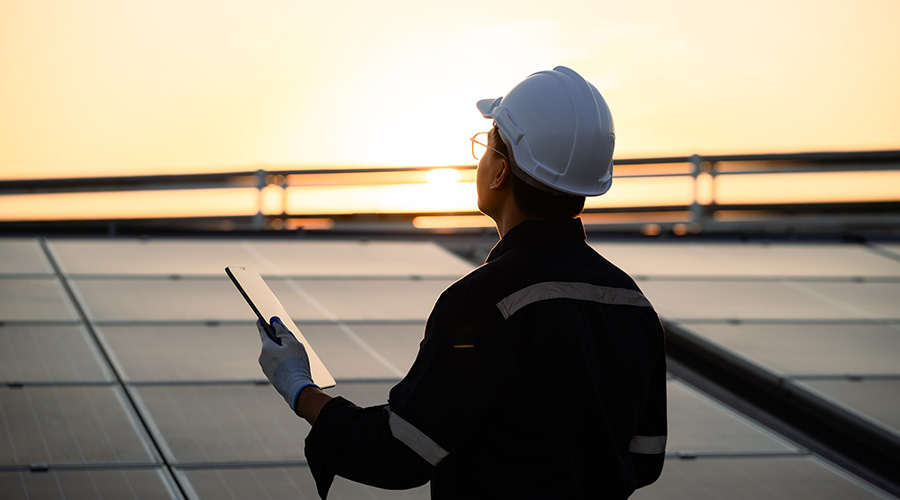Green Schools Save Money
Educational facilities stand at a crossroads. One in four U.S. students and teachers goes to a school that is considered substandard or inadequate to meet the physical and educational needs of students, according to the U.S. Green Building Council (USGBC). In the current tax environment, money to build new schools and to keep up existing facilities is often difficult to obtain.
But there is hope. If all new school construction and school renovations went green starting today, energy savings alone would total more than $20 billion over the next 10 years. On average, green schools can save $100,000 per year — enough to hire two new teachers, buy 200 new computers or purchase 5,000 new textbooks, according to a report from consulting firm Capital E.
State and local leaders are beginning to understand the promise of green design and have begun building high performance, sustainable environments that address the health of their students and the health of the planet. These sustainability initiatives are influencing curriculum decisions, operation budgets, facility plans and campus culture. Sustainable buildings are healthier. And more comfortable learning spaces are also said to help recruit and retain teachers. Through interdisciplinary and interdepartmental collaboration, schools and developers today are striving to create campuses that are learning tools for students to create a society where sustainability is a priority.
The importance of sustainable educational facilities is being recognized around the world. The United Nations General Assembly proclaimed the years between 2005 and 2015 as the “Decade of Education for Sustainable Development.” The overall goal is “to integrate the principles, values, and practices of sustainable development into all aspects of education and learning and to encourage changes in economic behavior that will create a more sustainable future in terms of environmental integrity, economic vitality, and a just society for present and future generations.”
Sustainability is the Objective
The move to sustainability is changing the way that schools are being built. In the past, the majority of instructional facilities were built with sealed windows that did not allow for natural ventilation. Today, facilities are designed to allow students or teachers to open and close windows. Facility executives can shut down or override elements of HVAC systems depending on the outside weather conditions. Sometimes, this is even automatic, if a building automation system is programmed to include weather data.
Another common goal for sustainable facilities is maximizing daylight — a technique that has been shown by several studies to improve student performance and student and faculty comfort levels. This approach has a double benefit: When a facility takes advantage of daylight by incorporating lights with sensors and automatic dimmers to reduce artificial light, the result can be significant energy savings along with an enhanced learning environment.
Sustainable design techniques also play a key role in promoting a healthy and more focused student body. HVAC systems that run quietly, and therefore reduce distractions, improve students’ concentration and learning ability. This is a major component of good indoor environmental quality — as are building products with low VOC emissions that don’t include toxins, allergens and other harmful pollutants. And sustainable site planning and landscaping designs should consider how to eliminate the use of pesticides and provide a healthy outdoor learning environment for students.
The structural, mechanical and technological systems of K-12 and higher education facilities should also be designed so that space is flexible and easy to reconfigure, meaning facility executives can move walls to expand or reduce room size without major structural upgrades. This is a sustainable strategy because it avoids renovation projects and the new materials and waste that result.
Techniques used for the green building of higher education facilities focus on the instructional space and emphasize ultimate flexibility. For example:
- Outdoor, social spaces are a large part of making a campus green. Each area should include Wi-Fi technology so students can stay outside and enjoy the benefits of natural light and fresh air. The technique of building more outdoor social spaces also decreases a campus’s total carbon footprint because the more time students are outside working or studying, the less time they’re inside using energy.
- To lessen the possibility of vandalism and the need for repairs and product replacement, computer labs should be highly visible and grouped together with interior walls allowing the faculty and technicians the ability to survey two classrooms at once.
- Interactive white boards could be used in classrooms, instead of chalkboards. The boards can digitally capture what is written on the board and send it electronically to the student’s computer. This can lessen, sometimes even eliminate, the use of paper.
K-12 and higher education buildings are designed to last 50 years because they are able to accommodate changes that most organizations can’t foresee. With the pace of innovation moving faster than ever before, the use of flexible design techniques will be the hallmark of the next generation of schools.
Value Through Sustainability
A common misperception about green building is that it will cost more than traditional facilities. As sustainability continues to move into the mainstream, the cost of premium green educational facilities is now minimal. Many green facilities actually deliver long-term savings due to reduced energy consumption and operating costs. The end result is a facility that will often pay for itself sooner than a traditional structure.
Economic benefits of sustainable buildings include reduced life-cycle and operating and maintenance costs, while environmental benefits include reduced energy and water use, reduced pollution and reduced landfill waste. Natural ventilation alone can save anywhere from 10 to 30 percent in monthly operating costs.
The commitments and efforts put forth to develop truly sustainable schools have a significant effect on learning. Sustainable schools can move above and beyond just meeting the needs of the faculty and students by actually giving them an improved learning environment while reducing the carbon footprint of buildings and increasing the health and well-being of the earth. 
Glenn Carels, AIA, LEED AP, a design principal at LPA, Inc., is responsible for leading the design of higher educational facilities.
Related Topics:













